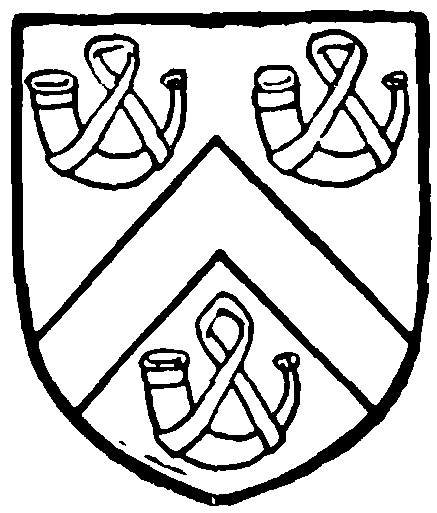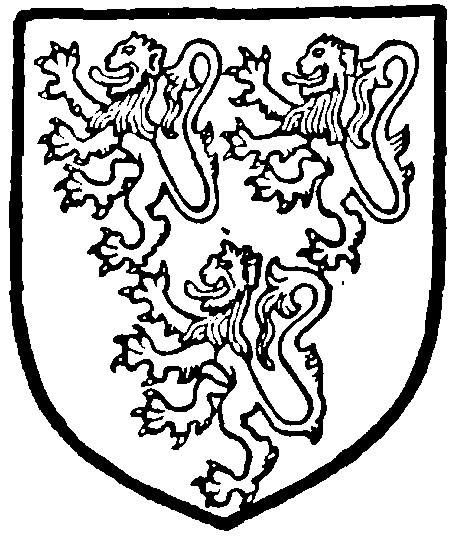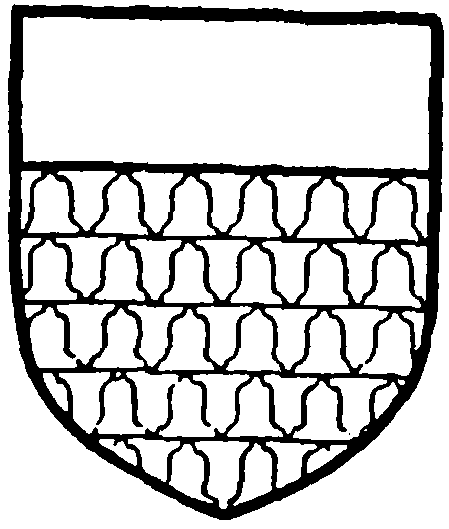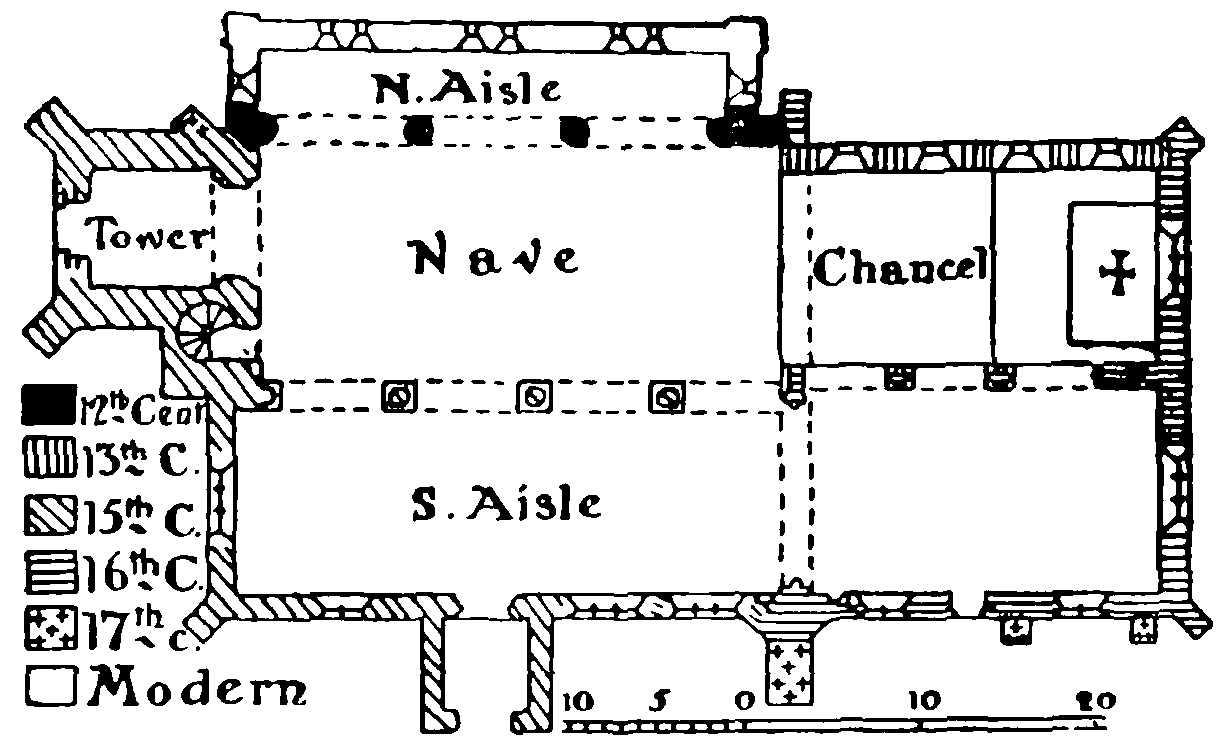A History of the County of Hampshire: Volume 5. Originally published by Victoria County History, London, 1912.
This free content was digitised by double rekeying. All rights reserved.
'Parishes: Brighstone (Brixton)', in A History of the County of Hampshire: Volume 5, ed. William Page (London, 1912), British History Online https://prod.british-history.ac.uk/vch/hants/vol5/pp211-215 [accessed 10 May 2025].
'Parishes: Brighstone (Brixton)', in A History of the County of Hampshire: Volume 5. Edited by William Page (London, 1912), British History Online, accessed May 10, 2025, https://prod.british-history.ac.uk/vch/hants/vol5/pp211-215.
"Parishes: Brighstone (Brixton)". A History of the County of Hampshire: Volume 5. Ed. William Page (London, 1912), British History Online. Web. 10 May 2025. https://prod.british-history.ac.uk/vch/hants/vol5/pp211-215.
In this section
BRIGHSTONE OR BRIXTON
Briccheston (xiii cent.); Brizteston, Brightestone (xiv cent.); Brixton (xvi cent.).
Brighstone, one of the southern parishes of the Island, about 7 miles south-west from Newport, was formerly included in Calbourne, but was separated ecclesiastically as early as the 13th century. (fn. 1) Atherfield Green and Atherfield Farm were transferred from Brighstone to Shorwell in 1882 and 1889 respectively, and in 1882 part of Shorwell was transferred to Brighstone. (fn. 2) The village, lying on the road from Shorwell to Freshwater, consists of one long street of scattered houses, many of which have thatched roofs. Here, as at Niton, the fuchsia, myrtle and veronica flourish in the open. The soil is clay and sand. The total area of the parish is 80 acres of foreshore and 2,846 acres of land, of which 1,006½ acres are arable land, 1,422 acres are permanent grass and 8½ acres are woodland. (fn. 3) The hamlets of Limerstone and Chilton lie within the parish boundaries, though the latter is partly in Mottistone. The manor-house at Limerstone is merely a long, low building without wings, with stone mullioned windows, and the only object of interest connected with it is a 15th or 16th-century painted board (fn. 4) with a quaint legend in black letter which was found under the flooring during some alterations in 1884. Waytes Court is an insignificant stone building, though somewhat picturesque with its stone mullioned windows and thatched roof.
At Brighstone Grange is a station of the Royal National Lifeboat Institution, the boat placed here in 1860 being the first in the Island. There is a coastguard station by the shore, a post office in the village and two inns, the 'Five Bells' and the New Inn. The National schools (mixed) were built in 1835 and subsequently enlarged. Robert Dingley, a notable Presbyterian divine, was (as he styled himself) 'minister of the Word at Brixton' from 1648 to 1660, and his Deputation of Angels (1654) is dated 'from my study at Brixton,' and dedicated to the Governor and other officers of the Island. The pious Bishop Ken, one of the Seven Bishops, held the living from 1667 to 1669, and is said to have written his well-known hymns in the beautiful rectory garden. William Wilberforce spent much of the latter part of his life in the house of his son Samuel Wilberforce, afterwards Bishop of Winchester, then rector of Brighstone. Dr. Moberly was rector from 1866 till raised to the see of Salisbury. (fn. 5)
Brighstone possessed a 'great gun' which is mentioned in the parish registers as 'one gonne of brasse' as early as 1570. The gun-house and 'shott' for the gun occur as early as 1679, and the same piece of ordnance is mentioned frequently under William III.
MANORS
At the time of the Domesday Survey Walkelin Bishop of Winchester held Calbourne as part of the possessions of the priory of St. Swithun, Winchester. This entry represents the manor of Swainstone in Calbourne parish and includes BRIGHSTONE, afterwards a separate manor. (fn. 6)
The manor of Swainstone was declared in 1303 to contain the hamlet of Brighstone. (fn. 7) In 1334, by virtue of the late grant of Swainstone Manor to William de Montagu, the king made an additional grant of the hamlet of Brighstone, which had by an error been omitted from the original grant. (fn. 8)
From that time the manor of Brighstone followed the same descent as that of Swainstone (fn. 9) until 1874, when it was purchased of Sir John Simeon by Mr. Charles Seely.
There seems to have been no separate court held for the manor of Brighstone during the 15th century, but the tenants from this hamlet and from Limerstone attended at the courts held half-yearly at Swainstone. (fn. 10) Only on one occasion in 1489–90 is it recorded that a separate court was held at Brighstone. (fn. 11)
It has been suggested that the manor of WAYTES COURT was represented in 1086 by the 2 hides in Calbourne held of the Bishop of Winchester by Herpul. (fn. 12) It is certainly identifiable with the messuages, land and rent at Brighstone given by Henry le Wayte (fn. 13) in 1321 to William le Wayte and Alice his wife, and confirmed by Alice widow of Henry a few months later. (fn. 14) This property remained in the Wayte family until the 17th century. Thus it descended to Thomas son of the last-named William Wayte and thence to John son of the latter. (fn. 15) In 1414 Thomas son of John was involved in a successful suit concerning the ownership of the property against John Gawen, who claimed it in right of his wife Edith. (fn. 16) John Wayte was dealing with the manor in 1530–1, (fn. 17) and in 1633 Alexander Wayte sold it to Sir John Oglander, (fn. 18) who purchased it for his nephew, the son of his sister Mary the wife of Thomas Kempe. (fn. 19) 'Wayght of Wayghtes Coorte hath been a very awntient gentleman in owre Island,' Sir John Oglander notes. 'I bought itt [Waytes Court] of him for my nephewe Kempe for 2500£, so Wayght is nowe extinct.' (fn. 20) The manor apparently passed from the son of Mary and Thomas Kempe to Amy 'daughter of Thomas Kempe,' who married Roger Clavell of Smedmore, co. Dorset. (fn. 21) She died in 1682 and her husband in 1686, and this manor fell to the share of one of their daughters, Bridget wife of John Eastmont of Sherborne, co. Dorset. (fn. 22) Bridget died in 1690 and her husband in 1722, (fn. 23) leaving a daughter Dorothy, who married Carew Hervey Mildmay (fn. 24) and was dealing with the manor of Waytes Court in 1723. (fn. 25) She died without issue in 1742, and on her husband's death in 1784 he left his estates to his great-niece Jane Mildmay, who married Sir Henry Paulet St. John, afterwards Sir Henry Paulet St. John-Mildmay, the third baronet. (fn. 26) He and his wife made a settlement of the manor in 1808, (fn. 27) and the estate has since descended with the title, being now held by Sir Henry Paulet St. John-Mildmay, bart., of Dogmersfield Park.

Wayte. Argent a cheveron gules between three hunting horns sable.

Mildmay. Argent three lions azure.
The manor of LIMERSTONE (Lemmereystone, xiii cent.; Lymerston, xiv cent.) was originally part of the manor of Swainstone belonging to the Bishop of Winchester, (fn. 28) and may possibly be represented by the 6 hides in the manor of Calbourne held of the bishop by Robert at the time of the Domesday Survey. (fn. 29) The overlordship passed with Swainstone into the king's hands in 1284, (fn. 30) and Limerstone remained a tithing of Swainstone, the tenants attending courts held at Swainstone until nearly the end of the 15th century. (fn. 31) In 1498, however, the manor was said to be held of the Bishop of Winchester, (fn. 32) and similar returns were made in 1555–6 (fn. 33) and 1564. (fn. 34)
The earliest mention of any sub-tenant of this manor occurs in 1255–6, when Mabel Tichborne granted a messuage and land in Limerstone to Hawise daughter of Geoffrey de Loges for life, with reversion to Mabel. (fn. 35) In a genealogy of the Tichborne family this Mabel is stated to be the wife of Sir Roger de Tichborne and the daughter and heir of Ralph de Limerstone. (fn. 36) As she was evidently holding Limerstone in her own right in 1255–6, it may be assumed that the manor passed to the Tichborne family through this marriage. John de Tichborne, who, according to the pedigree mentioned above, was the grandson of Mabel, was in possession of the estate in 1284, (fn. 37) and at the beginning of the 14th century John de Tichborne and Henry le Wayte held half a fee in Limerstone. (fn. 38) Henry le Wayte's holding was probably a part of Waytes Court (q.v.) and was held by his successor William Wayte in 1346. (fn. 39) Roger Tichborne, grandson of the above-mentioned John, (fn. 40) was holding the estate in 1346, (fn. 41) and the descent from that time until 1498 seems to have been identical with that of Tichborne (fn. 42) (q.v.). In 1498 John Tichborne died seised of the manor, which passed to his son William. (fn. 43) William was succeeded by a brother Nicholas, and from this date the manor, like that of West Tisted (fn. 44) (q.v.), remained in the Tichborne family until sold by Sir Henry Joseph Tichborne in 1724 to William Stanley of Paultons. (fn. 45) From that date it has followed the descent of the manor of Paultons. (fn. 46)

Tichborne. Vair a chief or.
SEUTECOME
SEUTECOME, which was held in the time of King Edward the Confessor by Leving and in 1086 by William son of Azor, (fn. 47) is probably to be identified with Sutton in this parish. During the 14th and 15th centuries land there seems to have belonged to the owners of Preston in St. Helens, (fn. 48) but no continuous descent of the estate has been found. Sutton is in the south of the parish near the military road.
The manor of UGGATON (Ugelton, xii cent.; Uggeton, xiii cent.; Oketone, xiv cent.), which possibly owed its origin to the 3½ hides in the manor of Calbourne held by Alsi of the Bishop of Winchester in 1086, (fn. 49) belonged to the Mackerels, lords of Brook, in the early 13th century. Thus in 1201 Ralph brother of William Mackerel, the original donor, confirmed a carucate of land at Uggaton to the Knights Templars, (fn. 50) but evidently retained the overlordship, since at the end of the 13th century the Templars held Uggaton of Robert de Glamorgan, successor of the Mackerels as lord of Brook. (fn. 51) Uggaton as attached to the Preceptory of South Baddesley followed the descent of Milford Baddesley (q.v.) until 1558, when it reverted to the Crown. It was granted in 1623 by James I to John Trayleman and Thomas Pearson, (fn. 52) of whom it was purchased by Stephen March. (fn. 53) One moiety of the manor passed from Stephen to Lewis March, who may have been the son of David March son of Stephen. (fn. 54) Lewis and his wife Mary were dealing with half the manor in 1672, (fn. 55) and Mary March, then a widow, made a conveyance of it in 1694. (fn. 56) It was perhaps this moiety which belonged in 1721 to Thomas Powell. (fn. 57) He was succeeded in 1761 by his son Harcourt Powell, on whose death in 1782 the manor passed to his son John Harcourt Powell. (fn. 58) John Harcourt Powell, son of the lastmentioned John, was dealing with a moiety of the manor in 1812. (fn. 59) He died in 1855, leaving co-heirs, Mary Agnes wife of W. W. Drake and Emma, who married the Rev. H. W. Haygarth. (fn. 60) All manorial rights in Uggaton lapsed in the 19th century.
The other moiety of the manor descended to the Bagster family, who apparently represented a branch of the March family. (fn. 61) It may have been this moiety which under the name of 'Muggleston' descended with Limerstone (q.v.) in the 18th century. (fn. 62) Muggleton Lane, near Limerstone Farm, still exists in the parish.
CHILTON
CHILTON (Celatune, xi cent.) had been held in parage by Alvric before the Conquest, but after the coming of King William it was divided into two holdings, half a hide being held by William son of Azor and half a hide by his brother Gozelin. Under William the manor was held by William Forist. (fn. 63) It is uncertain whether this holding is to be identified with half a fee in 'la Scherde (fn. 64) and Cheleton' held in 1279–80 by John de Kingston of William Russell, (fn. 65) or with a twelfth of a fee in Celerton held at the same date of the same overlord by Richard de Afton. (fn. 66) John de Kingston's holding belonged at the beginning of the 14th century to Jordan de Kingston, (fn. 67) who was succeeded in 1305 by his son John, (fn. 68) the owner of this estate in Sherde and Chilton in 1346. (fn. 69) It seems afterwards to have passed to William Rebert, for about 1429–39 John Kene was holding in la Scherde and Chilton half a fee which had formerly belonged to William Rebert. (fn. 70) In 1428 Richard Pak held a quarter of a knight's fee in Chilton which Robert Olde had once held. (fn. 71)
Apparently all manorial rights in Chilton ceased in the 16th century, since no further descent for this estate can be traced.
The grange of SHUTE (Sieca, Syeta, xii cent.; Scece, xiii cent.; Shewte, Chewte, xv cent.) is probably to be identified with land at 'Sieca' granted to the abbey of Quarr by Baldwin Earl of Devon and by Richard his son, and confirmed by Henry II (fn. 72) and Isabel de Fortibus. (fn. 73) In the confirmation charter of Isabel it is called 'land and tenements in Scece which once belonged to the manor of Louecumbe'(rectius Bowcombe). Free warren at Shute was granted to the abbot and convent in 1284, (fn. 74) and in 1291 the abbey's possessions there were valued at £5. (fn. 75) The grange of Shute was leased by the abbot in 1428–9 to Simon Bernard and Joan his wife and their son John, (fn. 76) and ten years later this lease was renewed. (fn. 77) In 1502 a new lease was granted to Richard Jakeman. (fn. 78) On the dissolution of the abbey the grange of Shute passed to the Crown, (fn. 79) and appears still to have been held under leases by the Jakemans or Jackmans in the reign of Elizabeth. (fn. 80) In 1611 the grange was granted to John Eldred and William Whitmore, (fn. 81) and in December of the same year, at the request of John Eldred and James Collymore and others, a lease of the manor for forty years was granted to Thomas Lovibond of Gatcombe after the expiry of an existing lease to the Jackmans. (fn. 82) Shute was purchased towards the end of the 17th century by Lord Colepeper, who left it to his natural daughter Charlotte, wife of Robert Perceval. (fn. 83) The descent of this estate cannot be traced further.
CHURCH
The church of ST. MARY stands to the south of the main road and consists of a nave with north and south aisles, chancel with south chapel, a western tower with wooden spire, and a south porch.
Of the 12th-century church nothing remains beyond the north aisle arcade, (fn. 84) and of the 13th-century building the only evidence is the west door, evidently not in situ, (fn. 85) the transitional 13th to 14th-century piscina bowl in the south wall of the south aisle, and the south door, which has mouldings of the period which may have been re-worked. (fn. 86) It is probable the first south aisle was also of this period, as it was certainly rebuilt of greater width in the 15th to 16th century, (fn. 87) possibly to meet the requirements of the manorial tenants. It was when this widening took place that the tower was added at the west end, to be followed almost immediately by the practical rebuilding of the chancel and the addition of a south chantry (fn. 88) —probably by the owner of Waytes Court—and the pulling down of the north aisle and building in of the arcade. (fn. 89) A north porch was added and further square-headed windows inserted in the spandrels of the blocked north arcade in 1617. (fn. 90) The present spire took the place of an earlier one in 1720, (fn. 91) the date cut on the cross-beam.

Plan of Brighstone Church
A so-called 'restoration' took place in 1852, when the north arcade was unblocked, the aisle rebuilt and the porch destroyed. The 15th–16th-century windows of the chancel were replaced by lancets, large late 'decorated' windows were inserted in the south aisle walls, (fn. 92) a lancet window was placed over the pulpit and the 13th-century doorway rebuilt in the western face of the tower. All these innovations make the history of the church a difficult matter to read with any confidence, more especially as the soft local stone ages rapidly in this damp climate. The north arcade has semicircular arches with a narrow splay on the edge, springing from columns with square capitals, and is of the end of the 12th century. The splays end in stops ornamented with a patera. (fn. 93) Attached to the western face of the westernmost column of the south arcade is a crude image bracket, (fn. 94) and at the crossing of the south aisle the rood-loft stairs still remain in the south wall, with, just to the west of it, the piscina already referred to—evidence of a former altar here. In the tower it is evident the floor of the ringing stage has been raised some 4 ft. to admit of the insertion of a large west window. (fn. 95) On this stage is a small opening on the east face filled in with modern wood tracery. The nave south arcade has octagonal shafts with splayed capitals and abaci with double annulets, the bases having spurs terminating in square plinths. The arch mouldings consist of an ovolo and hollow (fn. 96) without any label over. The chancel arcade is more elaborate, having quatrefoiled shafts and capitals, but with bases following the motif of those in the nave, the arches being four-centred and having double wave mouldings terminating in a hollow. The cross arch to the south aisle has a wave mould ending in a filleted bowtel—a somewhat unusual feature at so late a period—springing from responds with shafts divided by deep hollows. The pulpit is a fair specimen of early 17th-century work. The font is of the 15th century with octagonal bowl and shaft, both panelled on each face and ending in a square base. Over the south porch is a sundial. The oldest memorials in the church are two 18th-century slabs in the south wall just above the piscina, to the memory of Thomas and Francis Wavell. (fn. 97)
In the tower hang five bells—four recast (fn. 98) in the middle of the 18th century and one in 1800 (fn. 99) —inscribed: (1) 'John Lord zealous for the promotion of campanalogias art (fn. 100) in the year 1740 caused me to be fabricated in Portsmouth and placed here in the year 1740. 60 years I led the peal when I was unfortunately broken. In the year 1800 I was cast in the furnace, re-founded in London, and returned to my former station. Reader thou also shalt know a resurrection. May it be unto eternal life. William Chip, David Way, Churchwardens. Thomas Mears fecit'; (2) 'Success to the great Admiral Vernon'; (3) 'God preserve the British Arms, 1740'; (4) 'Prosperity to the parish of Brixton, 1740'; (5) 'Mr. John Lord Mr. Thomas Jolif Churchwardens, 1740. Joseph Kipling fecit.'
The plate consists of a chalice of 1663 and paten of 1672, both silver-gilt, the gift of Dr. Fitz William, rector 1670–5.
The earliest book of registers contains all entries from 1643 to 1812, the second marriages 1754 to 1823.
The account books are in three volumes, from 1566 to 1666, 1676 to 1751, 1757 to 1841; and the overseers' books in four volumes, from 1667 to 1849.
ADVOWSON
The church of Brighstone was originally a chapel attached to Calbourne, whose rector claimed it as a pensionary, (fn. 101) but by 1305 the authority of the mother church seems to have been disputed (fn. 102) and the rector of Brighstone's claim to autonomy recognized by the Bishop of Winchester as patron of both livings. (fn. 103) The advowson is and always has been in the hands of the bishop. (fn. 104)
The founder of the chapel of Limerstone is not known, but it may have been Geoffrey de Tichborne, a younger son of Sir Roger and Mabel de Tichborne, (fn. 105) for his nephew Sir Roger released to the chaplain of Limerstone all his right in land at Landguard given to the chapel by his uncle Geoffrey. (fn. 106) The chapel is mentioned in the returns made by the Dean of the Island to Bishop Woodlock in 1305. The warden at that time was one Martin, and the chapel was endowed with 3 carucates of land supporting three chaplains. (fn. 107) The chaplains received sentence of excommunication from Bishop Stratford (1323–33) owing to their ill conduct. (fn. 108) The advowson of the chapel was vested in the lords of the manor of Limerstone. (fn. 109) In the valuation of Church property made in the reign of Henry VIII the chapel, then called the chapel of the Holy Spirit, was declared to be worth £7 9s. 4d., William Tichborne being returned as the chaplain. (fn. 110) William Tichborne, 'gentleman,' took the revenue to his own use, and no priest was installed, nor had divine service been celebrated there for twenty years before the commissioners visited Brighstone in 1547–8. (fn. 111) The chapel, which was half a mile distant from the parish church of Brighstone, was then said to have been founded by Nicholas Tichborne 'to have a prest for ever to synge for the soule of the said Nicholas and all chrysten soules.' (fn. 112)
In 1584–5 the chapel of the Holy Ghost in Brighstone was granted, at the request of Henry Lord Wentworth, to Theophilus Adams and Thomas Butler. (fn. 113)
There is a United Methodist chapel at the west end of the village, to which a Sunday school is attached.
CHARITIES
In 1814 the Rev. Noel Digby by deed conveyed to trustees a messuage, tenement and lands, known as Brook Side Farm, containing about 21 acres, for the purpose of founding a school. The tenement was fitted up as a school. The farm was sold in 1877, and the proceeds are represented by £1,996 19s. 2d. consols, producing £49 18s. 4d. yearly.
The founder likewise gave £333 6s. 8d. consols, now £334 3s. 5d. consols, the annual income of £8 7s. to be applied in the purchase of books of instruction for the use of the school and any residue for benefit of the school.
The sums of stock are held by the official trustees, and the charities are regulated by a scheme of the Charity Commissioners dated in 1872.
In 1830 Kenelm Somerville and Jane Mills by deed gave £400 consols, the income to be applied in coal, fuel and other necessaries for the poor. The trust fund now consists of £401 0s. 1d. consols, with the official trustees. The annual dividends, amounting to £10 0s. 4d., are applied in bonuses to members of the coal and clothing clubs.